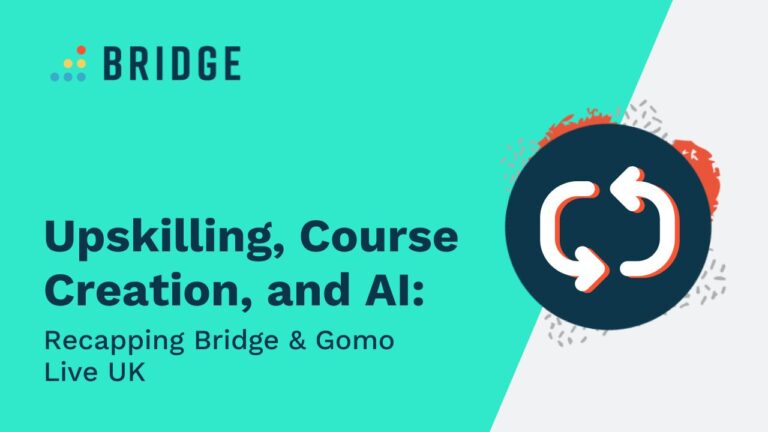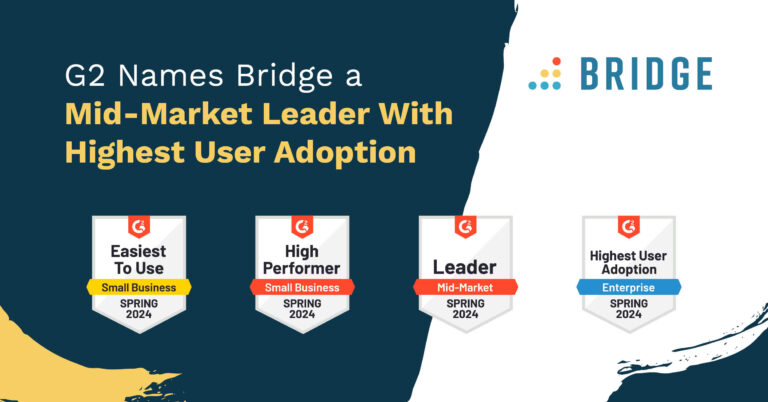Effective communication with your workforce is a must, and nowhere is it more essential than when you want to deliver meaningful learning and development. Enriching your workforce through learning is critically important as it maintains connection and alignment, and gives both your people and your company the opportunity for growth. This is a message that a lot of companies are taking on board. According to a McKinsey report from 2021, 69% of organizations have increased their commitment to building skills, and more than half plan to increase spending on learning. Employees also see the value of learning and development. In a 2019 survey of 1,200 US employees, 92% stated that they feel more motivated and engaged at work when they learn something on the job. How you choose to deliver your learning and enable these connections is a big decision. Having the right conversations with the right people needs the right tool.
As companies seek to remain competitive, keep workers engaged, and close skills gaps, a learning management system (LMS) needs to go beyond simply rolling out the same learning to all employees. Organizations need solutions that facilitate and track connections and engagement. They need a platform built with the entire employee experience in mind.
What Are the Benefits of a Learning Management System?
An effective and well-chosen LMS can form the basis of your learning strategy and help to deliver better targeted, effective learning. Here are some of the benefits:
1) An LMS Saves Time
According to the LinkedIn Workplace Learning Report 2020, one of the top factors preventing workplace learning is time, as 49% of employees can’t fit learning into their workday. Often, companies roll out the same learning and every employee is given the same basic set of courses to complete. That means that many of them are completing courses that aren’t aimed at them, aren’t addressing their individual needs, and are a waste of their time.
With an LMS, you can see the learning progress of your teams, schedule and target your learning and give your employees exactly the training they need when they need it. Without the bloat of poorly focused training, learners only get the information they need. Using a learning management system also means learners can access materials at their own pace and break it down into manageable chunks that fit around their work. It isn’t only learners who’ll save time with an LMS. An LMS can also cut down on the time required for managers to keep track of the essential learning their teams are undertaking.
2) An LMS Can Help Close Skills Gaps
As the adoption of technology increases and changes the landscape of the workplace, there’s concern that the current workforce doesn’t have the skills needed. A World Economic Forum report found that half of all employees will need to be reskilled by 2025. Coupled with the shrinking talent pool, as 69% of employers globally are struggling to find skilled workers, the answer lies in upskilling and reskilling your current workforce. Investing in an LMS can help to identify and overcome these skills gaps by mapping the skills that are currently missing from your workforce and delivering targeted learning paths to a select group.
FURTHER READING | ‘The Race to Reskill: 3 Ways Internal Mobility Can Help Close the Skills Gap’
3) An LMS Can Improve Employee Retention
Your people want more from their careers than just employee benefits—they want opportunities to learn and develop. One study found that 94% of employees would even stay at a company longer if their employer invested in their learning and development. An LMS gives your people access to a structured learning program with the resources they need when they need them. This reinforces the idea that the company culture is supportive of them and means that their jobs are more rewarding.
4) An LMS Helps to Align Learning and Performance Management Goals
Learning and performance management in the flow of work helps to strengthen the skills your employees learn. As they develop new skills, feedback and performance conversations measure how well they apply this learning. By integrating performance management features alongside learning elements, an LMS helps to connect the two seamlessly.
Ongoing conversations with managers have the power to strengthen relationships and give employees a consistent platform for raising concerns, tracking their progress, and giving them control over their own development activities.
RELATED READING FROM THE BLOG | ‘How to Choose the Right LMS & Performance Management Platform’
Why Do You Need an LMS?
The workplace is rapidly evolving and your workforce needs to keep pace. In order to meet future challenges, you need a well-trained talent pool. This will involve upskilling and reskilling your company to futureproof it. To put learning and development at the heart of your company culture and to do it successfully, you’ll need an LMS. When you’re weighing up options, consider the following:
1) Who Are You Training?
Choosing an LMS with all of your learners in mind means building the best possible foundation for success. You need the flexibility to give each employee the training they need—whether that’s onboarding new hires, upskilling and reskilling your existing talent, or delivering mandatory compliance training. If you have remote and distributed teams without a fixed location and your learners will be completing courses on the go, look for features that support both online and offline learning. A one-size-fits-all approach won’t work, so you need a solution to manage many different resources and allow you the adaptability to meet the needs of your entire workforce. The right solution can also address training beyond the workplace.If you need to train external partners or customers, you need a platform that’s simple to use and offers the ability to provide up-to-date product information and bite-sized training quickly.
2) How Many People Are You Training?
Delivering a learning program to just one person can be time-consuming and getting the right materials to them at the right time could be a logistical nightmare. With even a small group of learners, you can multiply those difficulties manyfold and it becomes easy to see why it makes sense to have an LMS automate the process for you. Customized learning journeys are an effective way of organizing and automating learning, making sure the right materials go to the right people at the right time with minimal administrative input. Larger teams can help stay connected and monitor progress by automating key checkpoints to provide feedback and assigning time for managers to check in with employees throughout the process.
3) What Kind of Content Will You Be Creating?
LMSs are ideal for creating, distributing, and storing content. Learners are individuals and a single approach to content simply doesn’t work. Some learners prefer written content, others find video content more engaging. Think about the sorts of content you’ll be needing and how you intend to source it. Will you be importing pre-made content or do you need a tool that facilitates authoring? If it’s the latter, look for a tool that supports the creation of different content formats to make your offering as versatile as possible—an intuitive content authoring tool can make creating and editing your own eLearning easy. If you want your managers and subject matter experts to help create training, you don’t just need flexible authoring, you need something so easy that anyone at your organization can make it.
4) How Does Your LMS Integrate With Other Tools?
Between the assault of emails and interruptions of real-time messaging, it’s easy to see how employees can become distracted. In most cases, the overabundance of different systems they need to access isn’t helping. With loads of tools to manage, an LMS that integrates seamlessly with them means everything is where you need it to be. An LMS that integrates with your existing tools such as your HRIS can save time and means your data is in one place. By connecting learning, performance management, career development, and employee engagement into one platform, you can align your goals more effectively and cut down on distraction.
5) What Are Your Success Criteria and How Will You Measure Them?
Learning and development isn’t effective if there are no measurable outcomes or ways to track progress. That’s why one of the valuable aspects of an LMS is the ability to capture and analyze actionable data with analytics.
Think about your reasons for implementing an LMS and what you want to achieve. You might want to see an increase in learner engagement, in course completion, or you’d like to cut down the time taken to complete a course. So it’s essential to have an LMS that provides you with the metrics you need to measure your progress in these areas and the tools to improve them.
YOU MIGHT ALSO LIKE | ‘Delivering Results: The Importance of Tracking Employee Learning’
6) What Level of Customer Support Do You Need?
Before making your decision, think about your customer service requirements and check whether the LMS vendor can deliver. Do you want to communicate over the phone, via live chat, or by email? Be sure to check their reputation to make sure they have a good track record for customer satisfaction, as you’ll need a company that’s responsive and reliable in the event you run into issues.




